Top 10 E-commerce Website Features to Boost Your Traffic & Sales
Vinh Jacker | 07-18-2023
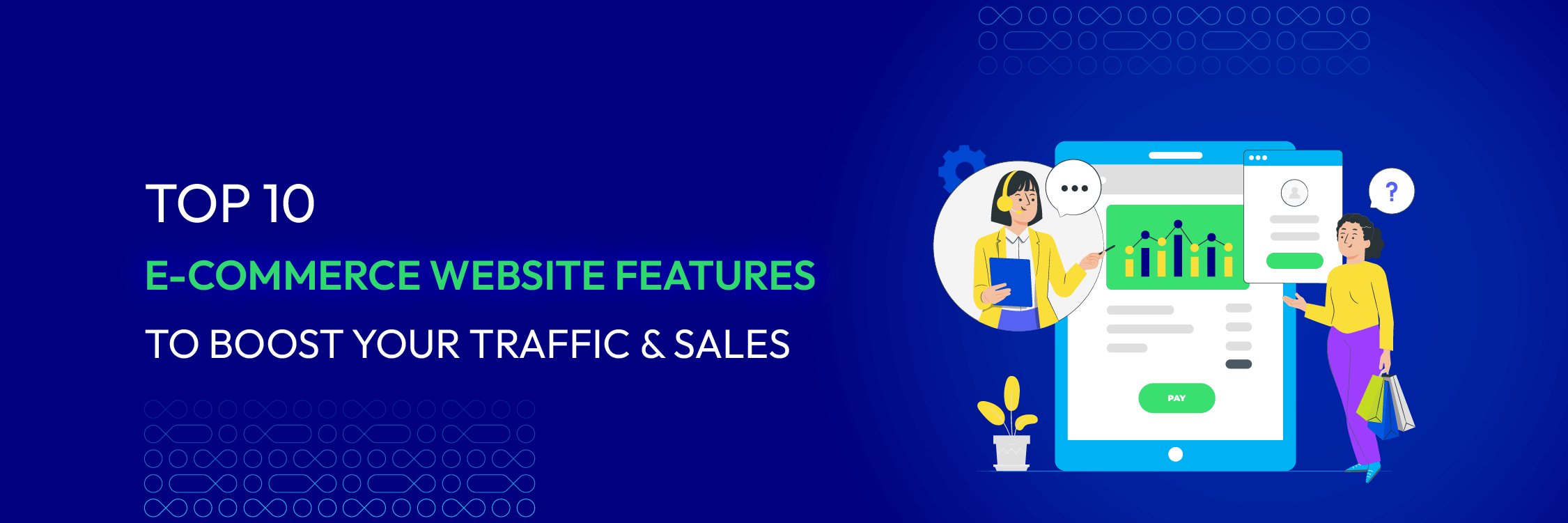
Nowadays, people’s shopping habits have changed quickly, and people tend to buy things online rather than offline. E-commerce is changing and dominating the world of retail. Hence, businesses need to make themselves
Nowadays, people’s shopping habits have changed quickly, and people tend to buy things online rather than offline. E-commerce is changing and dominating the world of retail. Hence, businesses need to make themselves more competitive in the e-commerce world.
If you are a business proprietor embarking on the e-commerce realm for the first time and you are struggling to find e-commerce website features that can boost your traffic & sales. Then, this blog post is for you!
This article will provide you with the top 10 E-commerce website features to rocket your traffic & sales. Let’s explore!
E-commerce website definition
An Ecommerce website is an online digital storefront of a business. Imagine it as a place where the transaction between buyer and seller will happen online. The ecommerce website is the equipment that helps to generate goods and services trading on the Internet and the Internet is where this equipment is located.
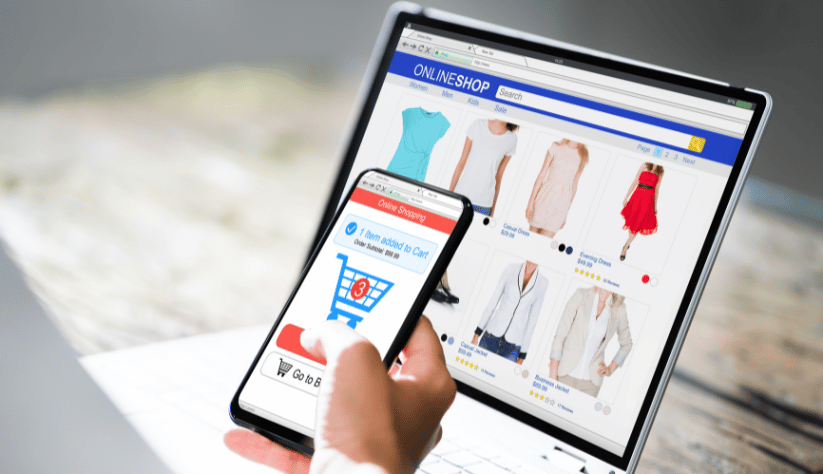
More specifically, an e-commerce website is an online showroom in which you can display your products, online customers can see and make a selection without visiting a brick-and-mortar store.
An E-commerce website replicates a brick-and-mortar store but more of an online version, with the presence of online sales staff, and a cash register that is available 24/7.
10 Must-have features of e-commerce website
Building and organizing an e-commerce website is a need for every business due to the ever-changing online shopping trends. However, running an e-commerce website while considering its efficiency is much more important.
Here are 10 key features of e-commerce websites that can ensure their efficiency:
Well-designed
A well-designed website must be a good reflection of the brand image and everything that it represents. The website design elements, such as colors, fonts, images, etc. all reflect the brand identity and distinguish the brand in consumers’ minds.
The layout of a website design needs to be present in a clever, logical, and thus simple and clean way that can grab customers’ attention the first time. Fonts and typography should be easy-to-read and visible on the background color that has been selected.
Here is an example of a well-designed website:
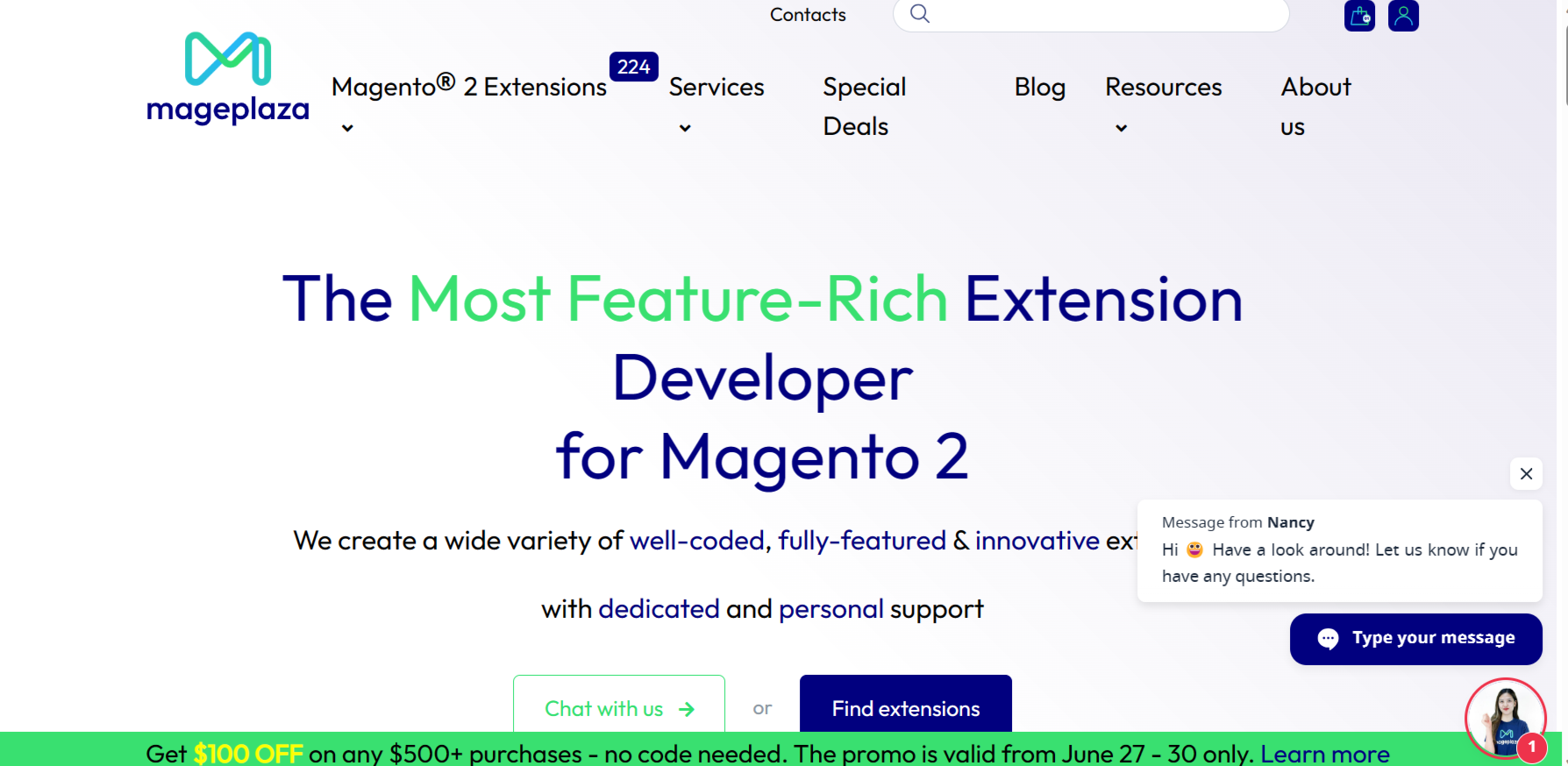
There are several reasons why this is a well-design website:
- Easy to understand: The first impression that Mageplaza gives to users when they first see its website is clean, logical, and concise. There are not too many texts being used, and the font is very minimal as well as easy to see on the website background. The text that appears in the center of the website display gives users information about the company’s services in a brief and concise way.
- Easy to navigate: The catalogs of products are located above the website’s fold. They are divided and grouped into 7 brief and concise catalogs that can cover all of the company’s services. Information about promotions is located at the top of the website and their chatbot always shows up on the web display to assist customers whenever needed.
- Reflect the brand identity: The three main colors of the website are Shamrock, Navy Blue, and White, which is also this brand’s color palette. They use this color palette for both the logo and the web display so it can represent the synchronism in their brand identity system. Overall, the website visual is designed in a smart, simple, and clean way, which is perfectly suitable for Mageplaza because it can represent the company’s characteristics including innovation, good reputation, and reliable image.
Website display plays a crucial role as an online storefront that informs customers about brands when shopping online. Therefore, a well-designed website is very important and helps form the first great impression.
Responsive website

The number of smartphone users worldwide is currently around 6.8 billion, which is expected to rise even further. Additionally, 79% of smartphone users report using their devices to make purchases through shopping apps or websites. Moreover, Google has been considering mobile-friendliness as a ranking factor since 2015. These compelling statistics serve as strong evidence for the critical role of mobile-friendly features in e-commerce websites.
So, what is a mobile-friendly website? A mobile-friendly website seamlessly adapts its design and functionality to various screen sizes and devices, particularly smartphones and tablets. It goes beyond simply shrinking down a desktop webpage. It prioritizes user experience and accessibility for mobile users.
A mobile-friendly website typically has the following characteristics:
- Readability: A mobile-friendly website is designed to be easily readable on a mobile device without users pinching and zooming on the screen to access the content.
- **Responsive design: **A mobile-friendly website often utilizes responsive design, meaning the website’s layout and elements automatically adjust and adapt to different screen sizes and orientations. This ensures that the website looks and functions well on various devices, including smartphones, tablets, and desktop computers.
- Mobile-optimized navigation: A mobile-friendly website typically has a navigation menu that is optimized for mobile devices. This may include a collapsible or hamburger menu that is easy to access and use on a smaller screen.
- Touch-friendly interactions: A mobile-friendly website considers touch-based interactions on mobile devices. It ensures that buttons, links, and other interactive elements are large enough and spaced appropriately for easy tapping and scrolling.
- Fast loading speed: A mobile-friendly website is optimized for fast loading on mobile devices, considering factors such as image compression, caching, and minimal unnecessary code. This is important because mobile users often have slower internet connections compared to desktop users.
Product Listing

A product listing page (PLP) on an eCommerce website lists products based on a category. This eCommerce website feature is a crucial element of the user experience as they funnel site visitors to product detail pages and bring them closer to conversion. They are often referred to as category pages and are rich with metadata. Each product on the page links back to a category page, which can heavily influence SEO rankings and internal link-building strategies.
In short, a product listing page can help to:
- Promote product discovery
- Encourage user engagement
- Decrease time to purchase
To create effective product listing pages, you should include specific elements that make it easy for shoppers to browse through the selection and find relevant products. Some key elements to include are:
- Category name: Clearly display the category and subcategory on the PLP to help shoppers keep track of where they are and easily modify their search.
- Search bar: Provide a clear and easy-to-locate search bar to allow users to search for specific products within the listing.
- Product images: Display high-quality product images that accurately represent the items.
- Product titles: Optimize the structure of product titles to ensure important information is visible upfront, especially on search engine result pages.
- Product descriptions: Include concise and informative descriptions that highlight key features and benefits of the products.
- Call-to-action buttons: Use clear and concise call-to-action buttons to guide users towards adding products to their cart or proceeding to the product detail page.
- Filters and sorting options: Provide filters and sorting options to help users quickly and efficiently navigate through the product listing and find what they are looking for.
Shopping cart
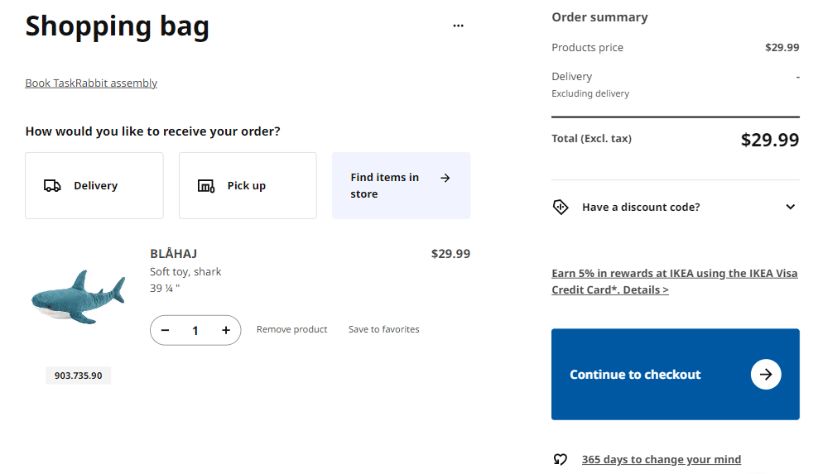
An e-commerce shopping cart is absolutely essential for any online store. It acts as a virtual basket, allowing customers to browse, select, and manage items they wish to purchase before finalizing their order. Here are some tips to build a good shopping cart as an e-commerce website features:
- Simplify the checkout process: Streamline the checkout process by minimizing the number of steps and form fields required. Offer guest checkout options to reduce friction for first-time customers.
- Optimize page load speed: Slow-loading shopping cart pages can lead to cart abandonment. Optimize the performance of the shopping cart by compressing images, minimizing code, and leveraging caching techniques.
- Provide clear and visible cart indicators: Display the number of items in the cart and the total order value prominently on the website. This helps customers keep track of their selected items and encourages them to proceed to checkout.
- Implement trust signals: Display trust badges, security seals, and customer reviews to instill confidence in the security and reliability of the shopping cart and the overall website.
- Save cart functionality: Let customers save incomplete carts to resume later.
Product reviews
Do you know that 79% of customers put as much weight on customer reviews as they do personal recommendations?
<img src="https://cdn2.mageplaza.com/media/blog/top-10-ecommerce-website-features/"Product reviews .png" alt=Product reviews">
Product reviews allow customers to share their opinions and ratings of products, aiding fellow customers in making well-informed choices.
Product reviews are a feature that enables customers to share feedback and ratings on products, helping other customers make well-informed decisions before purchasing the product.
This is one way to incorporate user-generated content into your e-commerce website and enhance the trust between businesses and customers. Customers tend to purchase from an e-commerce website that has customer reviews rather than a website that doesn’t.
Here are some key factors to consider for an effective product review section:
- Customer-generated reviews: They provide authentic and unbiased feedback about the product.
- Rating system: Implementing a rating system allows customers to rate the product based on their experience.
- Review sorting and filtering: Providing options to sort and filter reviews based on different criteria, such as most recent, highest rating, or most helpful, helps customers find the information they are looking for quickly.
- Review moderation: It allows website administrators to filter out spam, offensive content, or fake reviews.
- Visual content: Allowing customers to upload photos or videos along with their reviews can significantly enhance the credibility and usefulness of the review section.
- Q&A section: Including a question and answer section where customers can ask questions about the product and receive responses from the seller and other customers can be highly beneficial.
Wishlist or favorites
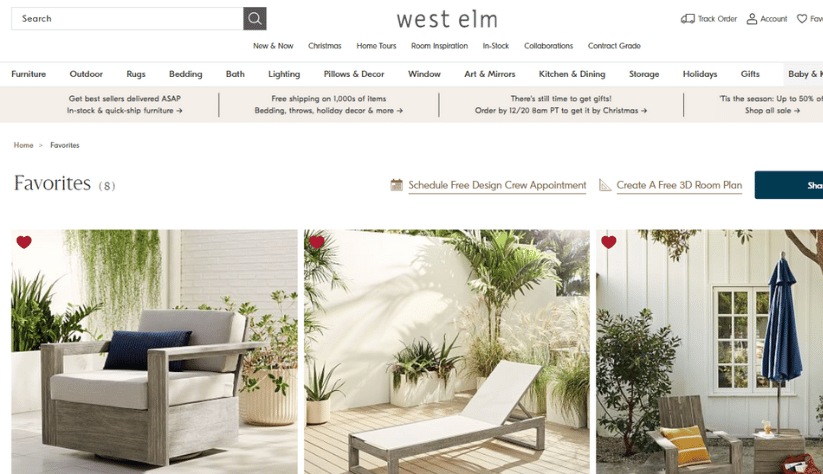
A wishlist or favorites is a feature that allows customers to save products they’re interested in for future reference or easy purchase.
Customers need a wishlist because they may think about purchasing a product, but they’re not ready to buy it yet or an item is out of stock in their preferred color or size, and they want to keep track of when it comes back in stock. According to a Google survey, 40% of shoppers believe that their shopping experience would be improved if retailers provided a feature that allows them to create a wishlist and save items they are interested in.
Also, providing wish lists is an efficient method to convert customers into buyers because wishlist offers data on customer preferences that can effectively be used in marketing campaigns.
Here are some key factors to consider when creating a good wishlist section:
- Clear Call-to-Action: The wishlist section should have a clear and visible call-to-action, such as an “Add to Wishlist” button, that prompts customers to save items for later.
- Sharing options: Giving customers the ability to share their wishlist with others can benefit both social proof and gift-giving. Including social sharing buttons or the option to generate a unique link for sharing can encourage engagement and increase traffic to the website.
- Notifications and reminders: Sending notifications or reminders to customers about their saved items can help increase engagement and encourage them to purchase. This can be done through email or push notifications.
Multiple payment options
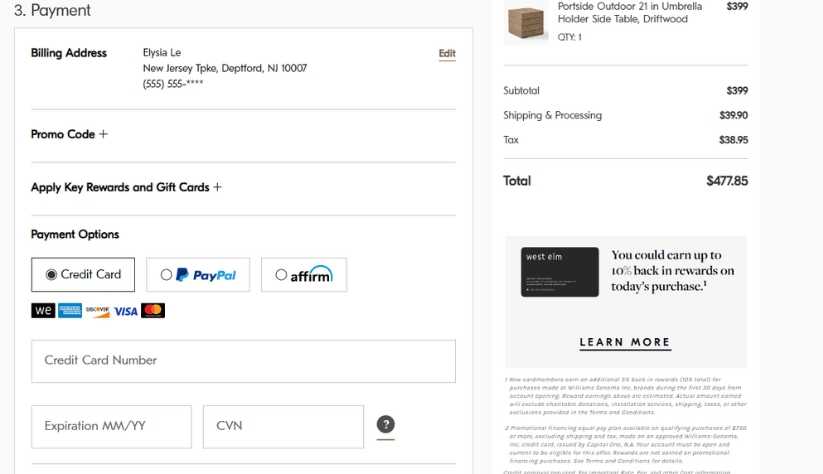
A research by Get Weave shows that offering multiple option payments can lead to a rise of 30% in revenue. Meanwhile, according to a study conducted in April by PPRO, if the payment method they prefer is not available, 44% of customers in general, 51% of Millennials, and 48% of Gen Zers will choose not to proceed with a purchase. These conversing numbers have unequivocally validated the significance of offering multiple payment options as a key e-commerce website features
Here’s a breakdown of multiple payment options you can add on your eCommerce website
- Traditional: Credit and debit cards (Visa, Mastercard, etc.) remain dominant, including prepaid cards and bank transfers.
- Digital wallets: Popular options include PayPal, Apple Pay, Google Pay, and Samsung Pay. These offer faster checkout by pre-storing payment information.
- Alternative methods: Buy Now, Pay Later (BNPL) services like Klarna or Afterpay allow customers to pay in installments without immediate interest.
- Cryptocurrency: Nearly half of Gen Z and Millennials have owned or currently own cryptocurrency, as stated in the May 2021 Cryptocurrency Payments Report. Thus, Bitcoin, Ethereum,..may become other payment options.
Order tracking
Once your customer places an order, the most common question that pops up in their mind is when my order will arrive. Despite timely shipment, there is no assurance that obstacles will not arise during the order’s delivery. This results in customers’ post-purchase anxiety.
With an order tracking system, customers can easily check their current order status on an e-commerce website and businesses can minimize post-purchase anxiety and save customer support time.
As one of the important e-commerce website features, your order tracking should have:
- Integration with shipping carriers: This integration enables customers to track their orders regardless of the carrier used for shipping.
- Customer notifications: The system should send automated notifications to customers at key stages of the order fulfillment process, such as order confirmation, shipment, and delivery.
- Order history: This allows your user to access past order details and track the progress of multiple orders simultaneously.
- Returns and exchanges: This enables customers to monitor the progress of their return shipments and ensures a smooth and transparent return process.
Promotions and discounts
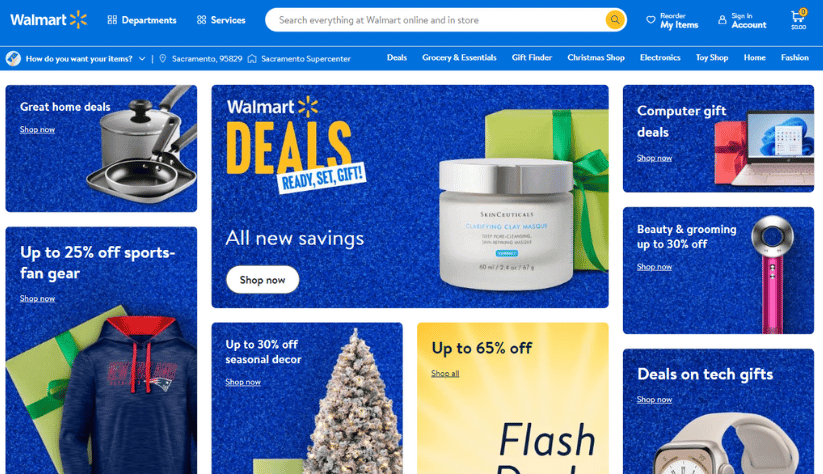
Promotions and discounts have become indispensable elements in the world of e-commerce, playing vital roles in driving revenue growth for businesses. In addition to boosting sales, these marketing strategies serve as powerful tools to attract new customers and retain existing ones. Take a look at the data provided by Capterra below to see why promotions and discounts are one of the e-commerce website features that you should have:
- Nearly 91% of online shoppers search for digital coupons before making a purchase, with 32% always doing so.
- A coupon increases the likelihood of online shoppers trying a new business by 86%, with 39% being significantly more likely.
- Not having a coupon has led 78% of online shoppers to decide against purchasing.
Here are two key factors to consider when implementing promotions and discounts on an e-commerce website:
- Carousels: Many e-commerce brands use carousels on their homepage to showcase their latest promotions and sales.
- Email opt-in: Including an email opt-in feature allows e-commerce businesses to collect customer email addresses and send them promotional emails.
Chatbots
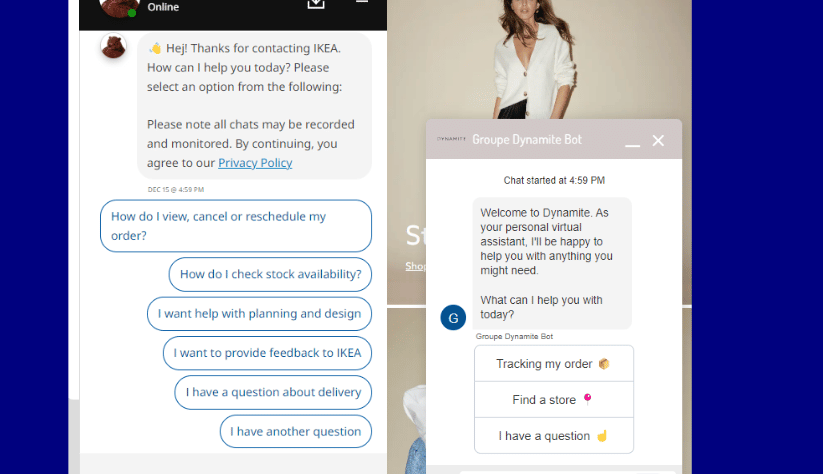
Chatbot is an online versatile version of shop assistants, who can solve customer concerns and queries in multiple languages. More than that, their round-the-clock availability enables customers to discover websites regardless of time or time zone.
According to Chatbots Magazine, chatbots have been found to significantly increase eCommerce revenue, with reported boosts ranging from 7% to 25%. Alternatively, approximately 34% of online retail customers accept the usage of chatbots as a valid and useful tool for their shopping experience (stated by Invesp).
Now, there are two common types of Chatbot platforms you can choose to integrate for your eCommerce website features, which is:
- Ready-made solutions: Shopify, Wix, and other platforms offer built-in chatbot options or integrations with popular services like ManyChat or Drift. These are easy to set up but may offer limited customization.
- AI-powered platforms: Dialogflow, Rasa, and others provide more flexibility and control over the chatbot’s behavior and training. They require technical expertise.
Multiple languages
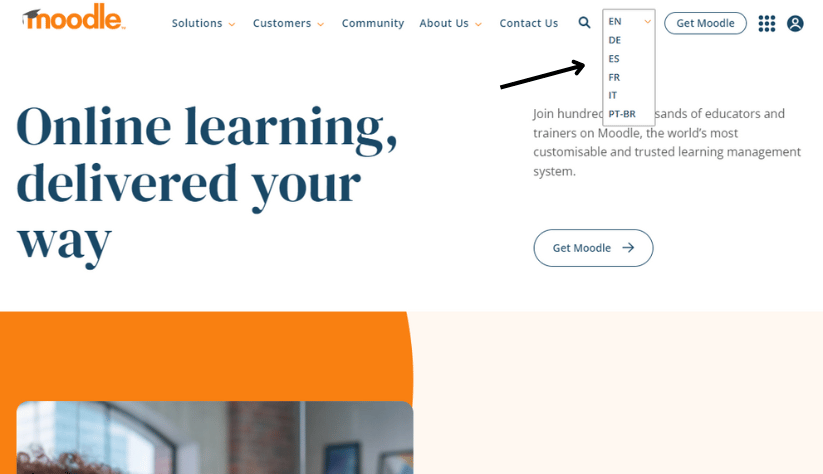
- Having a multilingual website can significantly expand your reach to Internet users who do not speak English as their primary language, potentially reaching up to 75% more people.
- About 60% of global consumers prefer to browse websites in their native language, which greatly improves the overall user experience.
- Businesses that have implemented multilingual websites have reported an average 70% increase in conversion rates.
- Providing content in multiple languages, you can see a significant increase in online sales of up to 100%.
The compelling statistics provided above clearly demonstrate the importance of incorporating multiple languages as an important feature for any eCommerce website. If you’re not sure how to implement this feature, here are some helpful suggestions:
- Create a sitemap that includes all languages: A sitemap lists all the pages on your website and helps search engines understand and index the different language versions of your site.
- Automatically detect users’ language preferences: Detect users’ browser settings to default to their preferred language and provide a seamless experience.
- Make language switchers easily discoverable: Place language switchers prominently on your website, using recognizable signifiers like country flags or currency symbols.
- Translate relevant content strategically: Choose which pages or sections to translate based on the interest they generate for your target market.
- Use multilingual plugins or integrations: Utilize plugins or integrations like WPML or Weglot to create a multilingual website on platforms like WordPress or Squarespace
5 E-commerce website features trends for 2023
Establishing an e-commerce website is very significant in the digital era right now. Here are 5 e-commerce website development trends that can shape e-commerce website development in 2023:
Voice search
Voice search allows customers to use voice commands with their digital devices to navigate the website. Customers can use their voice to search and no longer have to type things.
As the demand for voice assistants such as Amazon Alexa and Google Assistant continues to rise, voice research is believed to make our lives even easier and bring consumers the level of convenience they always crave.

Live shopping
Live shopping or livestream shopping, live online shopping, and live video shopping, no matter what it’s called, brings the age-old practice of in-store personalized shopping experience into online times.
In today’s digital era, live streaming has gained immense popularity as a powerful and efficient method to maintain connectivity with audiences and boost the customer’s shopping experience.
Omnichannel integration
E-commerce websites will continue to integrate multiple sales channels, including social media platforms, mobile apps, online marketplaces, and physical stores. An omnichannel approach ensures a seamless and cohesive experience for customers, irrespective of the platform they choose.
Mobile commerce
The dominance of mobile devices in online shopping is expected to rise continuously. E-commerce websites will need to prioritize mobile optimization, ensuring seamless browsing, responsive design, and mobile-friendly checkout processes.

Enhanced security
With the growing concern over online security and privacy, e-commerce websites need to prioritize data protection, and secure payment gateways, … Making cyber security crucial for e-commerce because it can bring your business a better chance to win your customer’s trust.
Read more:
Conclusion
Having your e-commerce website is crucial to your e-commerce strategy. This proves to be a highly efficient method for businesses to grow their brand, acquire loyal customers, attain new customer insights, and get creative with their marketing.
If you are struggling with building your e-commerce website and want to develop your website with the help of field experts then Magento Development Services might be a coincidence solution for you!






![Top 20+ Must-have Shopify Apps for 2025 [Free & Paid] - Mageplaza](https://cdn2.mageplaza.com/media/blog/must-have-shopify-apps/top-must-have-shopify-apps.png)
![[2025 Updates] Top 10+ Upsell Apps for Shopify - Mageplaza](https://cdn2.mageplaza.com/media/blog/best-upsell-shopify-app/cover.png)